On March 3rd, escrow closed on our house in San Juan Capistrano. We spent a hectic morning shoving a few remaining belongings into our storage unit, and said a final goodbye to the place we’ve called home for the last couple of years. Then, we headed South to Carlsbad.
We spent our final two days on US soil with friends and family. Our journey started on March 4th- but before leaving San Diego, we indulged a little and had brunch at one of our favorite spots in Carlsbad Village, Cafe Topes. Cafe Topes has excellent coffee, along with classic and novel menu items. Specifically, we went there to enjoy one of their locally legendary cinnamon rolls. Not only are the rolls giant- they aren’t overly sweet; as they use a cream cheese frosting instead of the typical sugar-based icing used by most bakers. The warm, gooey, cinnamon deliciousness was the perfect send off to the next leg of our trip.
We then hopped in an Uber, which took us from Carlsbad to LAX for about $112. We were going to take a train and then shuttle to LAX save money, but we decided to go with Uber to save time instead; we had a 30+ hour flight ahead of us.
Transit to Kathmandu
We bought our flights using points from Chase Bank’s rewards program. We signed up for the Chase Sapphire Reserve credit card in January during a promotion. The card cost $450 and the benefits included 100,000 points that are transferable to almost any travel service company, and a $300 voucher for use towards any travel related purchase. Our flight to Kathmandu from LA cost about 60k points, but would’ve cost $1200 if we paid out of pocket.
We flew from LAX to Seoul, then to Singapore, and then to Kathmandu on Singapore Airlines. Singapore Airlines is one of the nicest airlines that flies to Asia, and I highly recommend spending the extra money and choosing either Singapore Air or Thai Air. The customer service and food are great, and nearly everything is included- food and alcohol, newly-released movies, decent legroom, pillows/blankets, etc. We could’ve saved some money by flying a budget Chinese airline, but we’ve heard horror stories from friends flying through congested Chinese airports who experienced 16+ hour delays and cancelled flights. We didn’t want to risk it, so we paid a bit more and added a few hours to our itinerary to fly around China.
Nepal Overview
Before we left on our trip, I knew very little about Nepal. Here’s some quick facts about the country that many consider one of the most beautiful and affordable places to visit. Nepal is landlocked, bordered by China and India, and Kathmandu is the capital. English is spoken nearly everywhere in Nepal; especially in cities and tourist areas. The Himalaya Mountains (and Mt. Everest) are in the north of the country, and the flat-lands are in the south. It was never colonized, maintaining independence as a monarchy for centuries, and is predominantly Hindu (around 80% of the population) and Buddhist (10% of the population). In fact, Buddha was born in southern Nepal in 563 BCE. Some of the biggest challenges Nepal faces are poverty, hunger, a government transitioning from monarchy to democracy, and natural disasters- a deadly earthquake killed nearly 9,000 people in 2015. At the time of writing, the exchange rate is approximately 105 Nepali Rupees (RS) to $1 USD.
Kathmandu City
We landed at about 12pm March 6th Nepali local time. The Kathmandu airport is disorganized; a medley of signs, some ancient, some new, and some totally irrelevant. We stood in a long line to pay for a visa, and then another line to get the visa stamped in our passport. We probably should’ve read a blog on how to navigate immigration at the airport, because it was pretty confusing and disorganized.
We hired a taxi to take us to Thamel (Tah-Mel), and drove about 30 minutes through the bustling, dusty city. Thamel is 5.5km west of KTM airport, and we paid 700 RS for a taxi from the airport, but later learned we should’ve only paid 350 RS. Tiny Suzuki micro-cars and mopeds dash to-and-fro in loosely-coordinated chaos. Thamel is a neighborhood within Kathmandu where most travelers decide to stay because it has hundreds of cafes, hotels, spas, and shops that provide souvenirs and trekking supplies. This is where most mountain climbers stay. Like the rest of Kathmandu, the car traffic and foot traffic is high energy, but not aggressive.
Navigating the streets and sidewalks was initially frightening because drivers seemed reckless, but we actually found most divers followed some sort of unspoken “rules of the road” (that we don’t understand) and we never saw any accidents. Everything flows as peacefully as it does quickly.
We arrived at our Hotel in Thamel, called “Kathmandu City Hotel” and as soon as we connected to the WiFi I received messages from our friend Ryan who was traveling 300 km from India on a tiny micro-bus to see us. Ryan has been a friend of mine since college and has been traveling the world since about 2011. He expected the bus ride to take 8 hours but it actually took 14 hours, so we didn’t see him on the day we arrived. It’s typical for buses to be late because the roads in northern India and most of Nepal are in disrepair (or are completely dirt/stones). Ryan previously lived in Kathmandu for three months so he has a wealth of information about the city. Our “hotel room” was $20/night, and was clean but very basic. Ryan’s “guest house” was $5/night- and was only a bit lower quality. It seems the best way to find good prices is to talk to other travelers, or survey the area you want to stay in and negotiate with guest house owners and hotel receptionists for the best deal.
The city is very dusty and the air is polluted, so most drivers and pedestrians wear masks over their nose/mouth to filter out some of the larger particulates. We immediately invested in dust masks upon spending 5 minutes walking around without them and already feeling like our lungs were being damaged.
The next day we had breakfast in Thamel with Ryan at Phat Kath, a super fun restaurant with good coffee. He showed us his favorite restaurants and shops, including a trekking shop called “Shona’s.” Shona’s is unique because the owners are extremely honest about which items are necessary for each trek, and all prices are fair and non-negotiable, which is nice because we were getting tired of haggling.
People and Customs of Nepal
The people native to a certain mountain region of Nepal are called “Sherpas.” Like most Westerners, we thought “Sherpa” referred to any guide on a Himalayan trek- however, since not all guides are Sherpa, it’s actually incorrect to refer to all guides as Sherpas.
“Namaste” is the word used for all greetings and goodbyes. Translated, it means, “I bow to you,” but most yoga enthusiasts take it to mean, “The spirit in me acknowledges the spirit in you.” It’s said with a small bow of the head and hands pressed together in a “prayer” fashion. Speaking of fashion, we noticed many young Nepalis in the cities wearing western clothing. Older generations tended to wear more traditional garb, which was usually colorful and full of beautiful patterns. I’ve had my eye on a particular type of hat worn by the Ghurka people. I think I could rock it. You’ll see.
We’ve found Nepalis to be extremely warm and welcoming. According to many travelers we’ve encountered (and our own experiences thus far), Nepal is relatively safe for tourists, with very little theft or con artists taking advantage of unsuspecting tourists.
Temples
We spent our first full day in Kathmandu visiting religious sites with Denisse, a friend we met at a cafe who knew Ryan. We went to a Tibetan Buddhist monastery called Kopan which was a 300 RS taxiride outside of town. We’d never seen a proper Buddhist monastery with monks out and about so it was nice to observe them and take in the incredible views of the city. From Kopan we walked to a large Buddhist “stupa,” or shrine, at Boudhanath. I was moved (figuratively and literally) by the hundreds of people walking in clockwise fashion around the stupa after they finished their work day, performing small rituals of devotion like burning huge baskets of incense and lighting hundreds of candles at a time. There was so much positive energy and life, which is so refreshing. Lastly, we watched the sunset and observed a religious tradition at the oldest Hindu temple in Kathmandu, Pashupatinath, built in 400 BC. At Pashupatinath, every evening at around dusk the bodies of the recently deceased are “purified” and ceremoniously cremated on the banks of the Bagmati River. The cremation is facilitated by a Hindu priest and the family of the deceased, and friends and family gather to observe. Anyone visiting the temple can freely observe this tradition from the other side of the river, and though we felt a little unsettled at first because death in the Western World is treated much differently- we were touched by the intimacy of the process, and felt tremendous respect for the tradition that’s been maintained for over a thousand years. It costs 1000 RS per person to enter, but we heard there is a way to get in for free that requires a lengthy walk.
Food
The food is plain and delicious. Nepal is regionally famous for “momos” (fried or steamed dumplings) and dal bhat (rice with a variety of side dishes made with curried or steamed vegetables and lentils). We have been eating vegetarian steamed momos almost every day, either as appetizers or as a meal. Dal bhat is also “bottomless” and costs about $1.50 USD, so it’s a great value. We haven’t eaten any meat at all during our trip- it isn’t always accessible in restaurants as most Nepalis are primarily vegetarian, and the vegetarian food here is flavorful and fantastic. We heard travelers are more likely to get sick eating meat than vegetables. We don’t feel like we’re missing anything by not eating meat, so we plan to keep up the trend since it’s healthier anyway.
We’ve mostly been drinking black tea, ginger lemon honey tea, and lassies (yogurt smoothies)- and of course bottled, boiled, or filtered water.
Transit to Pokhara
After Katmandu, we traveled to Pokhara because it’s considered the gateway to the the Annapurna region of the Himalayas. The city is much smaller than Kathmandu and is situated next to a beautiful lake. We attended a yoga retreat there, which we will talk more about in our next post!
We decided to fly to Pokhara instead of taking a bus, as buses are frequently delayed and the roads aren’t in good condition, so it would likely be a grueling ride. Flights were $112/person one-way, and we decided avoiding the bus was worth the splurge.
The Kathmandu Airport’s domestic flight terminal is surprisingly much easier to navigate than the international terminal. We arrived three hours before our flight because we thought it might be busy, but really one hour would have probably been enough time, as flights are small and relatively infrequent.
So that covers our experiences and impressions in Kathmandu, our first stop. Namaste, friend!

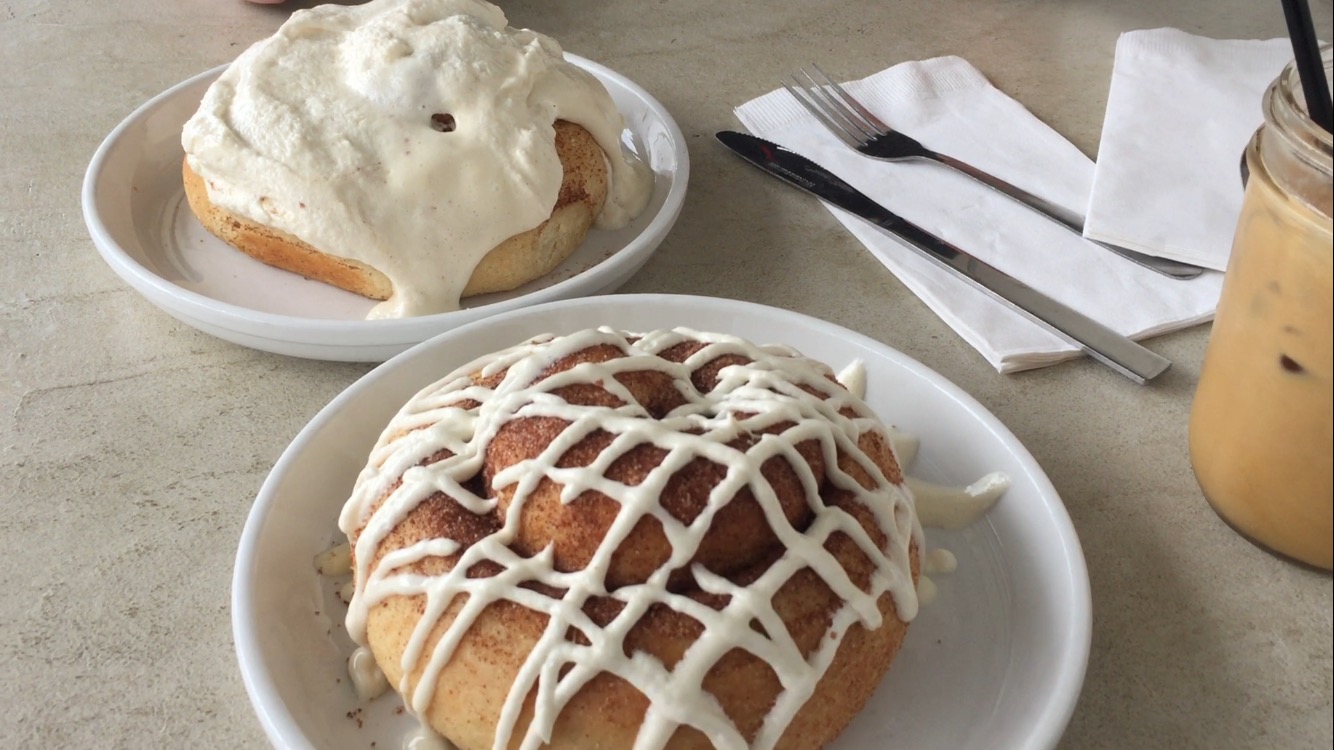
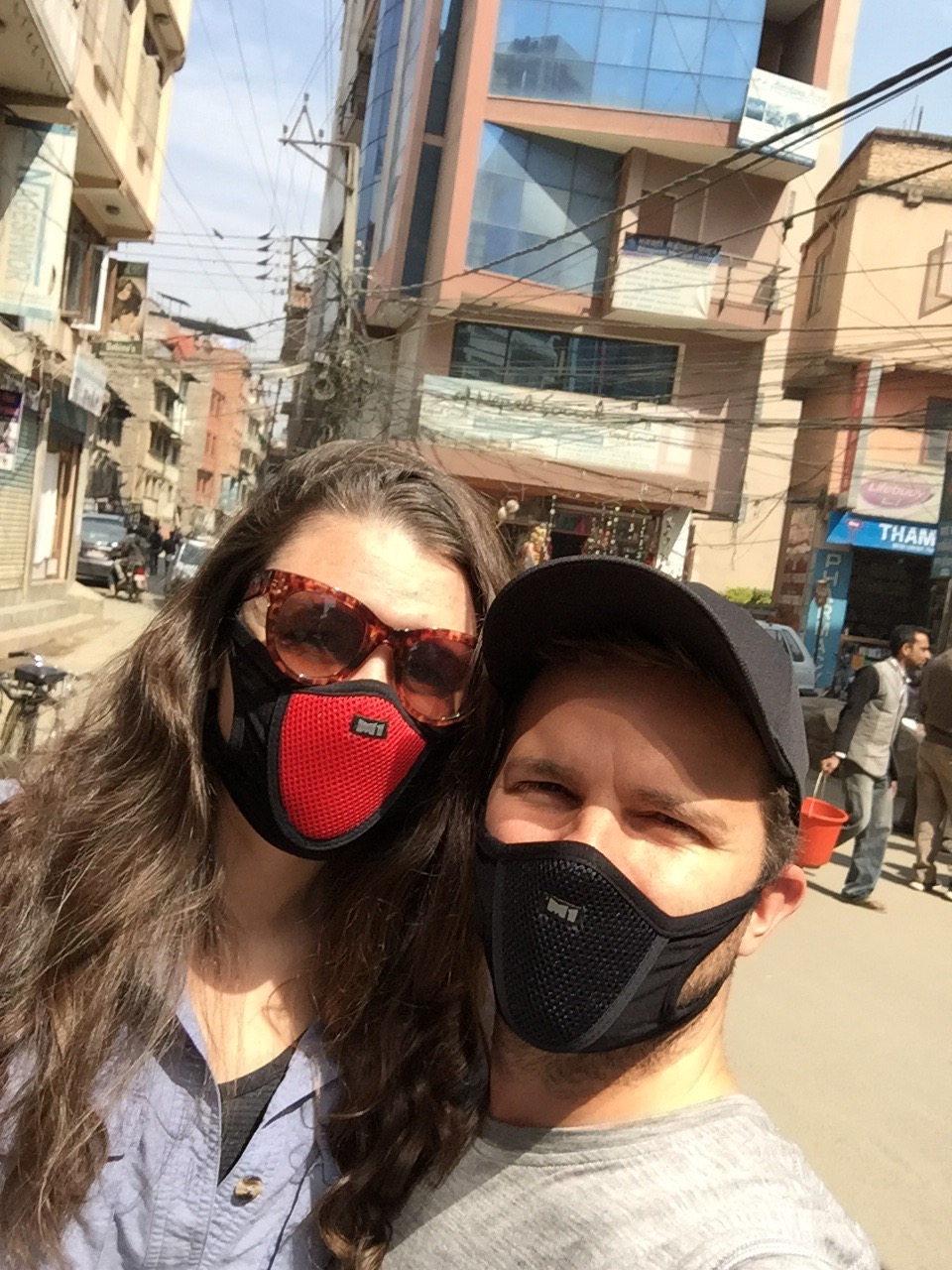
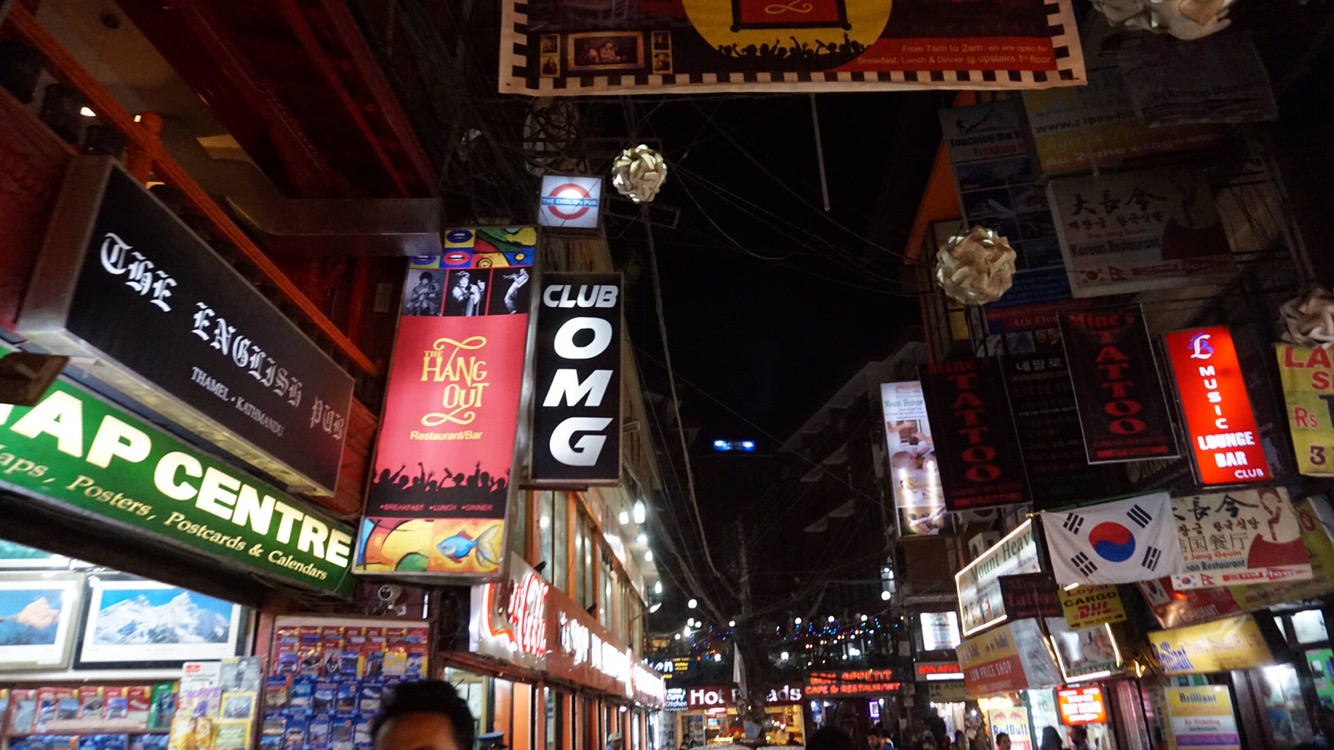
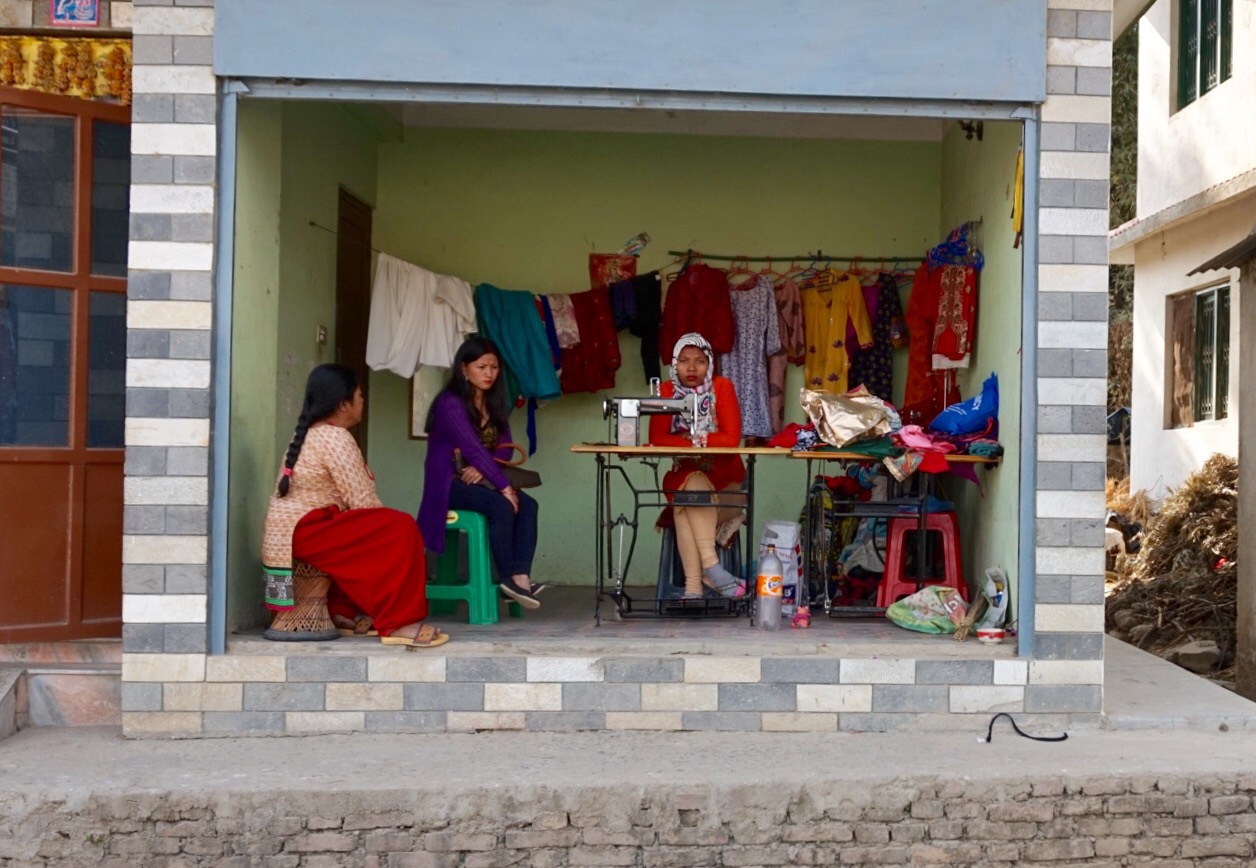
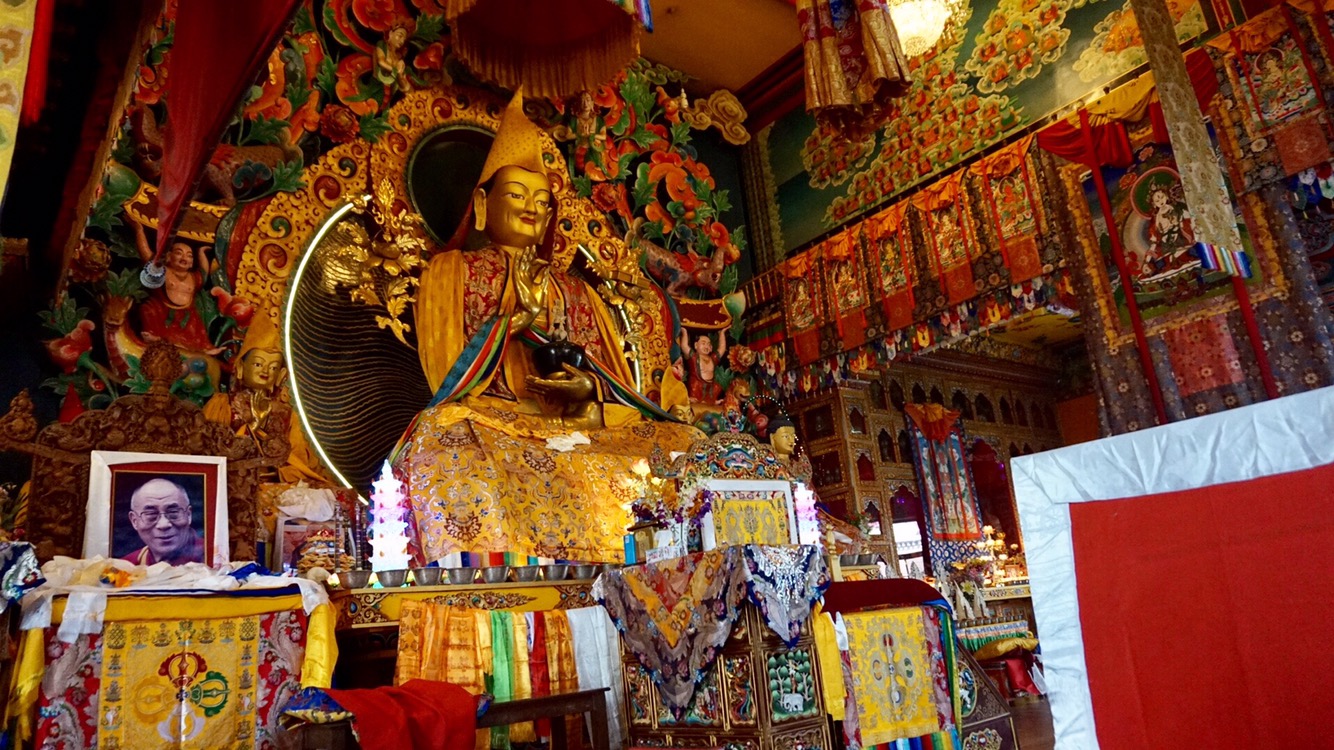
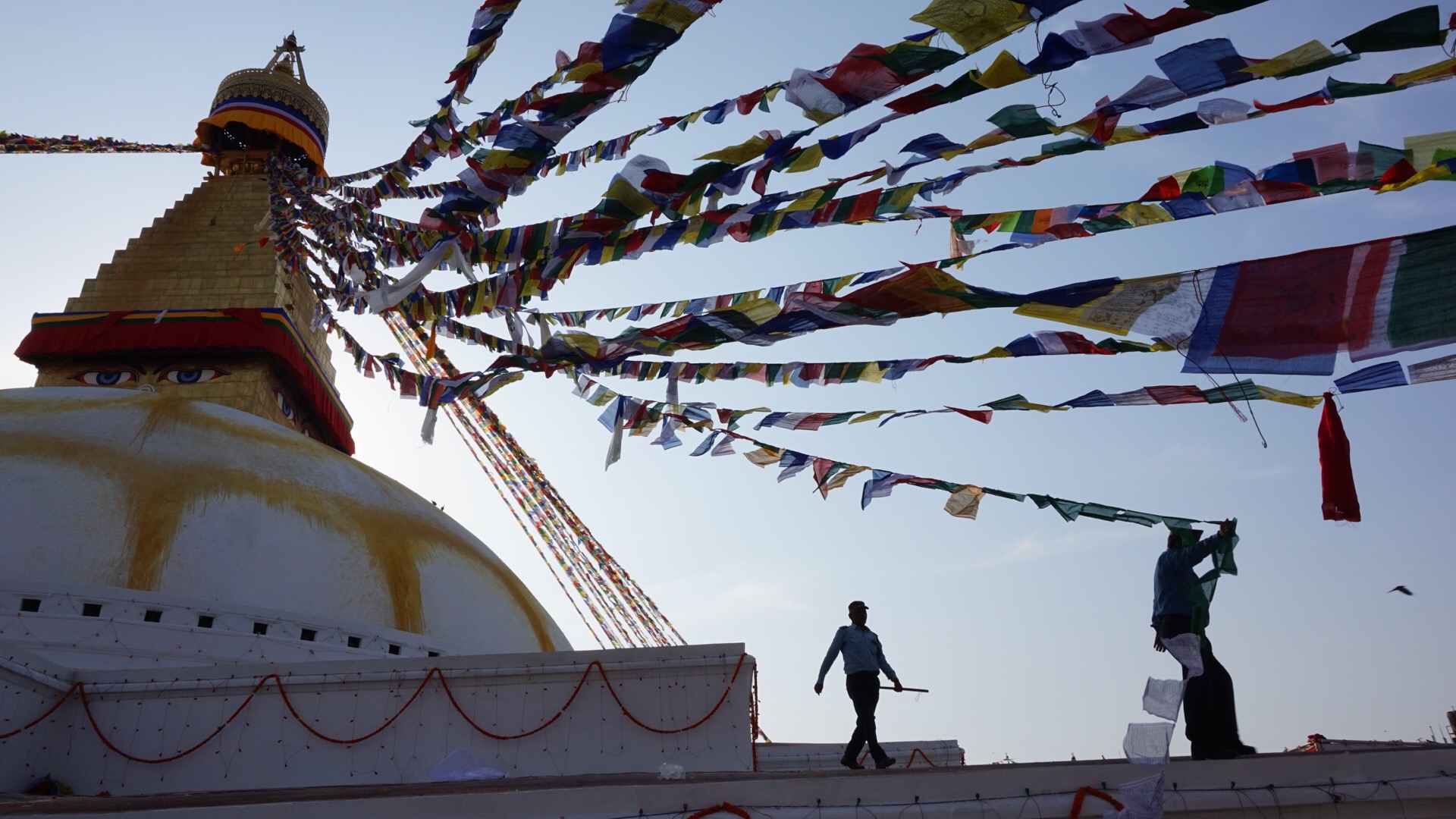
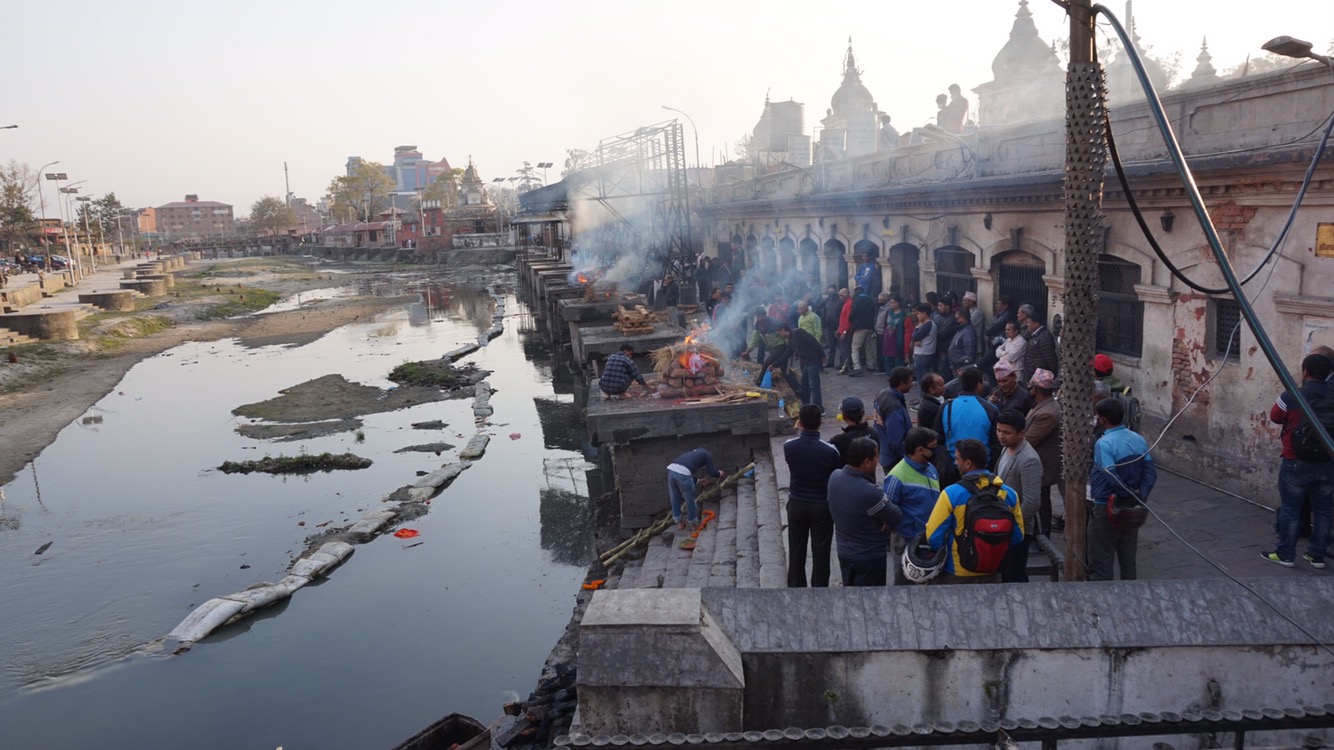
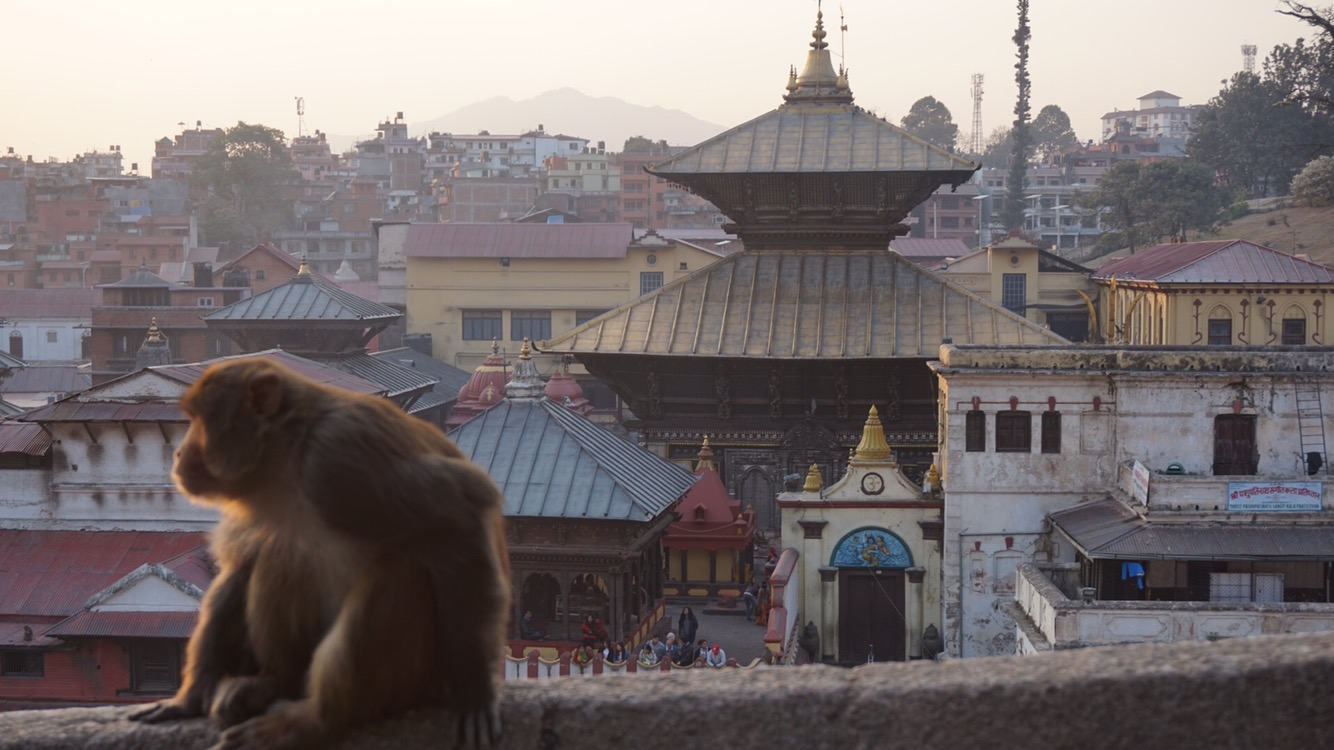
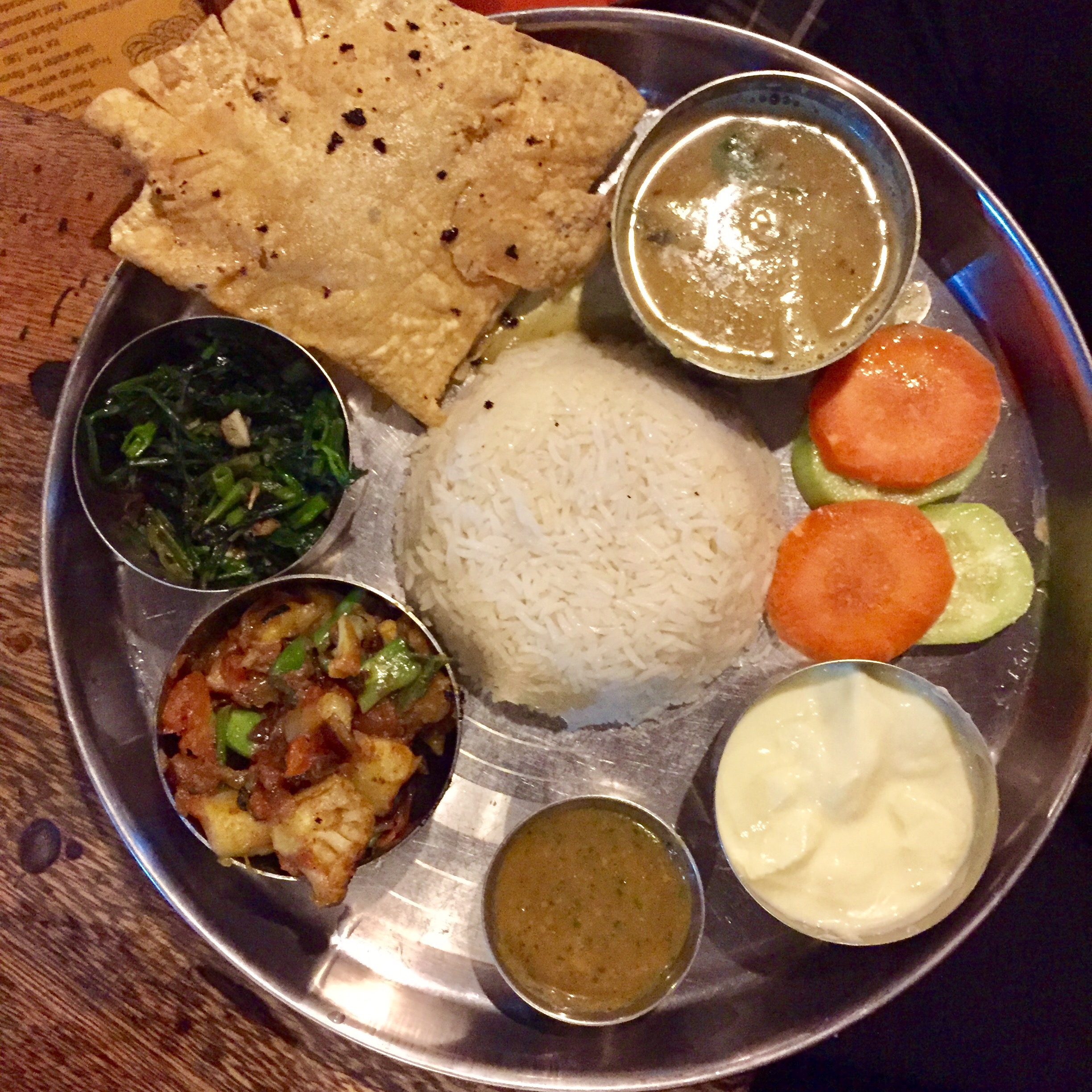
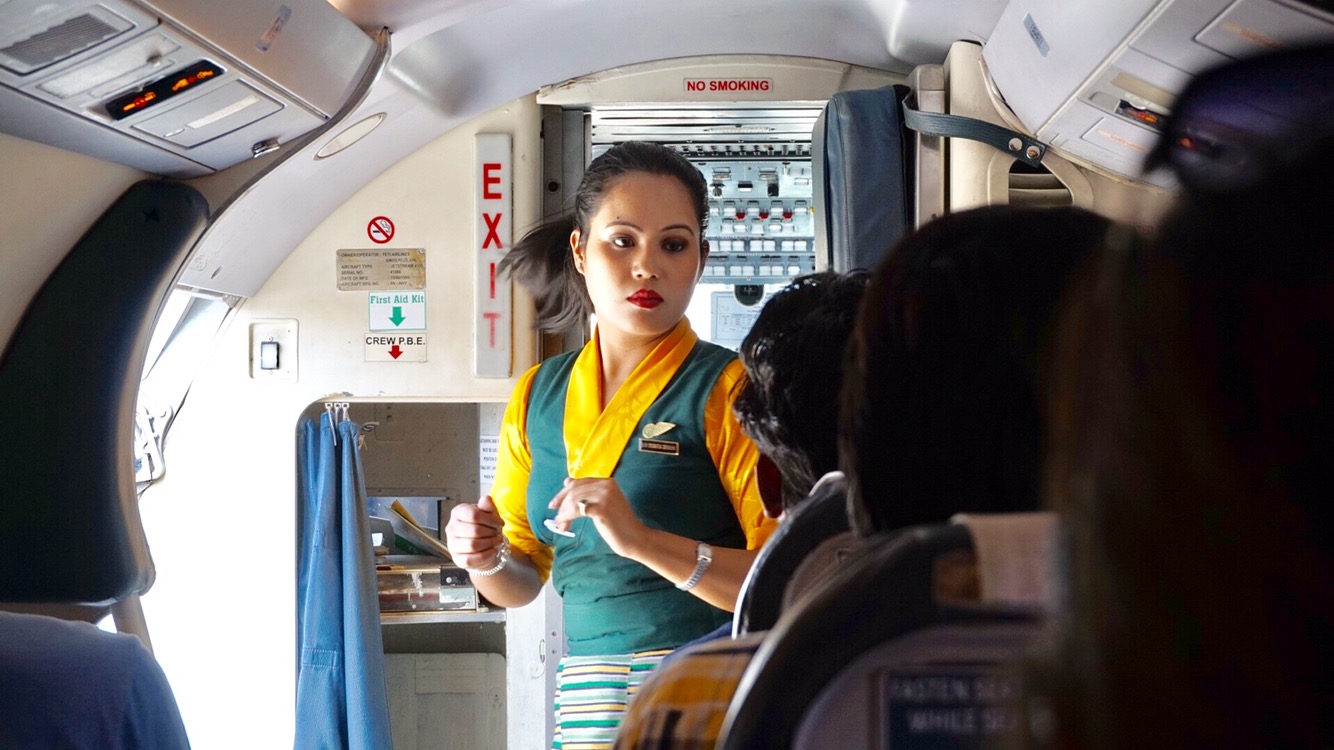
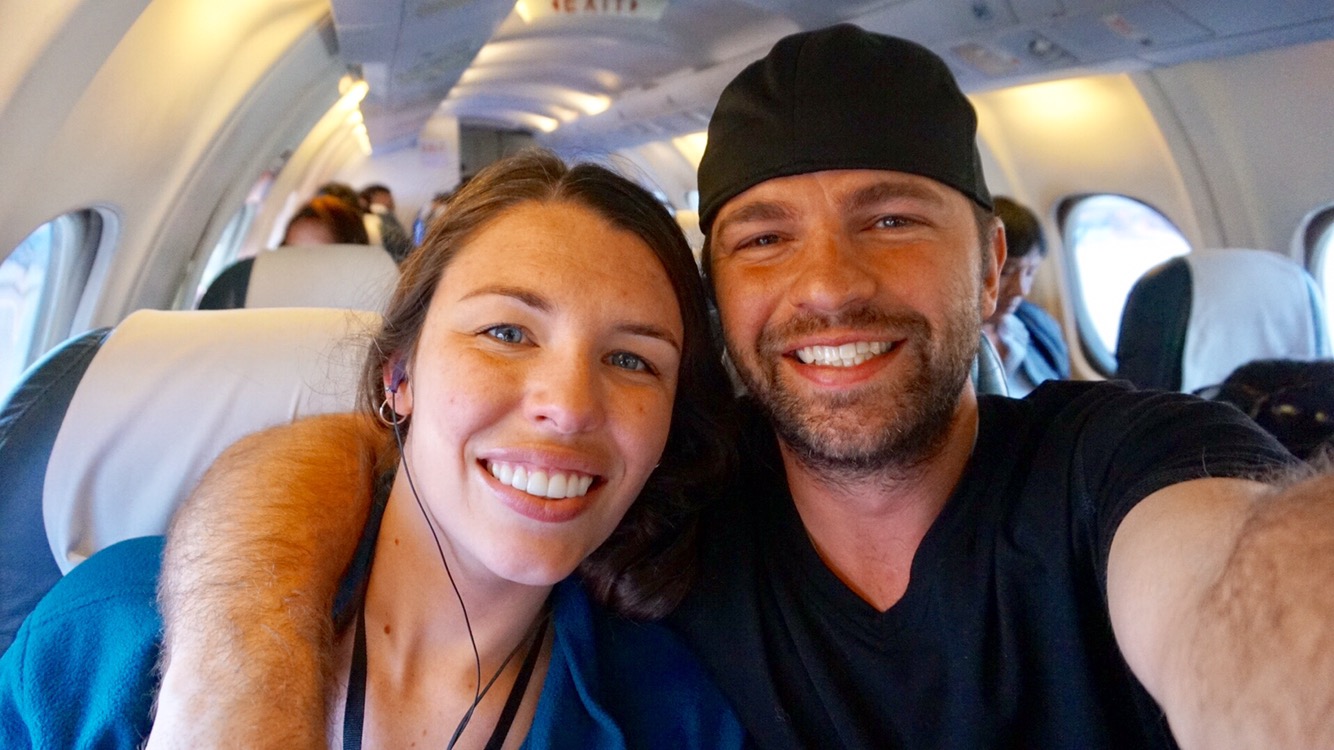
Where’ the new hat photo?
Aloha
What a great adventure. Eagerly awaiting the next chapter.
May peace be with you.
Sounds awesome man!! Cant wait to see it for myself some day!! Cant wait for the next post 🙂